
The Renaissance period, a time of cultural rebirth and artistic flourishing in Europe from the 14th to the 17th century, brought about a renaissance in jewelry design as well. This era marked a significant shift in the way jewelry was perceived and created, with a focus on intricate craftsmanship, symbolism, and artistic expression. Let's delve into the world of Renaissance jewelry to uncover its beauty, significance, and enduring legacy.
The Artistry of Renaissance Jewelry
Renaissance jewelry was more than just adornment; it was a form of art. Skilled artisans, including goldsmiths and lapidaries, dedicated themselves to creating exquisite pieces that reflected the artistic ideals of the time. Gold was the primary metal used in crafting Renaissance jewelry, known for its malleability and ability to hold intricate designs. Gemstones such as diamonds, rubies, emeralds, sapphires, and pearls were highly prized and meticulously set into gold settings to enhance their beauty.
Influences and Motifs
The designs of Renaissance jewelry were influenced by a variety of sources, including nature, classical antiquity, and religious symbolism. Motifs such as animals, flowers, fruits, and mythological creatures were commonly featured in Renaissance jewelry designs. The use of symbolism was prevalent, with each motif carrying specific meanings or representing virtues such as love, fidelity, or prosperity. Religious themes were also prominent in jewelry during this period, reflecting the strong influence of the Catholic Church.
Techniques and Craftsmanship
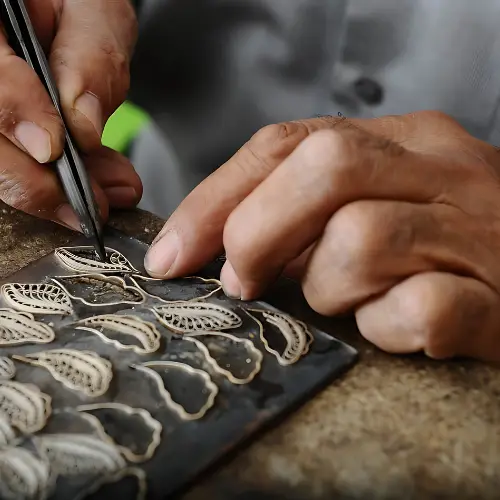
The craftsmanship involved in creating Renaissance jewelry was highly intricate and precise. Goldsmiths employed techniques such as filigree work, granulation, enameling, and gemstone setting to bring their designs to life. Filigree work involved twisting thin threads of gold into delicate patterns, while granulation involved fusing tiny gold beads onto a surface to create intricate designs. Enameling added vibrant colors to jewelry pieces, enhancing their visual appeal.
Iconic Pieces
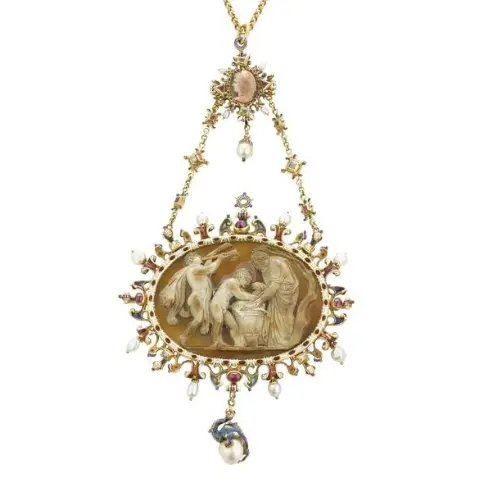
One of the most iconic pieces of Renaissance jewelry was the pendant. Pendants were often elaborate in design, featuring intricate goldwork and multiple gemstones. Carved gemstones were popular for pendants, with detailed scenes or figures depicted on both sides. Pendants served not only as decorative accessories but also as symbols of wealth and status. Earrings, rings, bracelets, and necklaces were also popular during the Renaissance period, each showcasing the exquisite craftsmanship and attention to detail characteristic of the era.
Pendants

During the Renaissance, pendants took center stage as the most distinguished pieces of jewelry, stepping into the spotlight and replacing the traditional brooch. These exquisite adornments were elegantly worn with long gold chains, either fixed to the dress or suspended from the girdle. Meticulously carved from both the front and back, these pendants featured miniature sculptures depicting biblical scenes and intricately crafted monograms. Some pendants were designed for couples, proudly displaying their initials adorned with precious jewels, creating a personalized and cherished accessory.
Rings
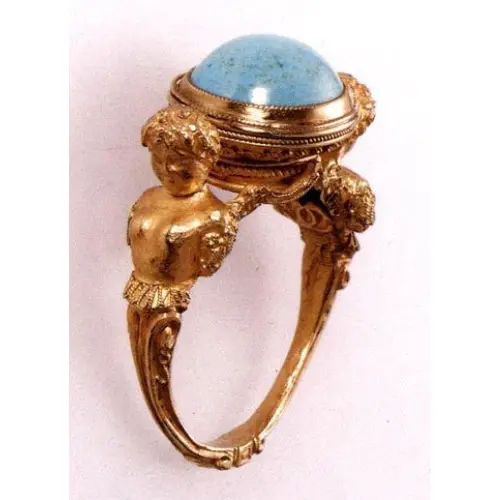
Renaissance women embraced the art of ring wearing, adorning all five fingers and even placing rings on each joint of the finger. These rings were opulently ornamented, some concealing hidden compartments designed for scented materials, serving a dual purpose of adornment and practicality. Men displayed their engagement rings on neck chains, while brides received engagement rings adorned with a single studded gem, often a radiant Ruby. Rings went beyond mere decoration, evolving into sundials, compasses, and, intriguingly, functional clocks. Signet or seal rings became a common way to inscribe documents, worn proudly by the bourgeoisie. Despite the variety of ring styles, the precious and coveted Ruby stood out as one of the most popular gemstones. A fascinating historical tidbit reveals that many gemstones believed to be rubies during the Renaissance were, in fact, spinels. Distinguished by a range of colors from deep red to velvety blue, both rubies and spinels found their place in some of the greatest Renaissance jewels, now treasured in museum collections.
Earrings:
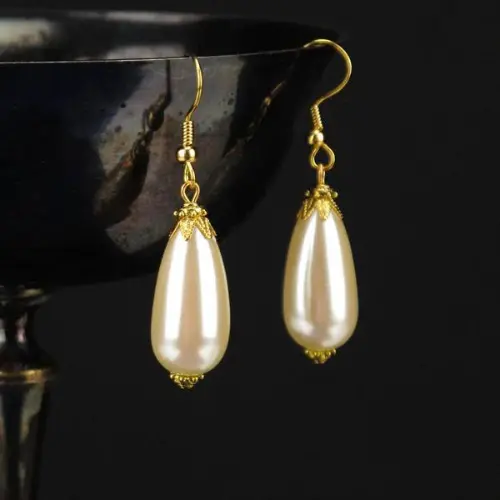
The Renaissance witnessed a resurgence of earrings after the Middle Ages, where paintings depicted women concealing their ears with hair. Earrings of this era ranged from simple pear-shaped pearls to intricate jewel drops, adding a touch of sophistication to Renaissance fashion. These earrings either elegantly hung from the ear or were daringly pierced through, showcasing a newfound appreciation for ear adornment.
Head Ornaments: The Subtle Ferronnière Revival
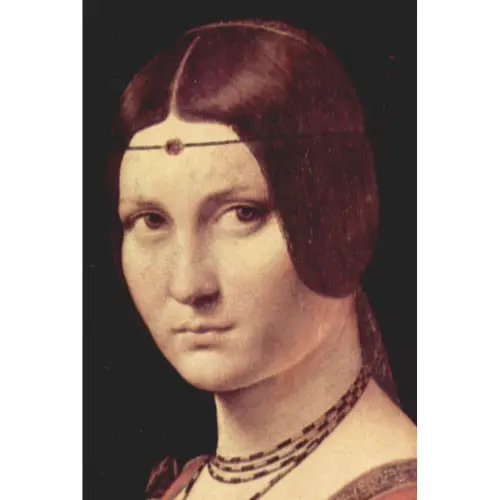
A ferronnière, pronounced, is a type of headband that encircles the forehead, typically adorned with a small jewel suspended in the center. Originating in late fifteenth-century Italy, this headband regained popularity in the second quarter of the nineteenth century, earning the name ferronnière. It became a fashionable accessory for both daywear and, more notably, formal and evening attire. The ferronnière, characterized by its subtle yet captivating design, originally featured a single gem or stone during the early Renaissance. Experiencing a resurgence during Victorian times, this head ornament showcased its enduring charm throughout different historical periods. With its timeless appeal, the ferronnière, gracing the forehead with a single gem or stone, exemplified elegance and remained a choice of refinement for individuals seeking a touch of sophistication in their attire.
The use of head ornaments evolved, giving way to coiffures, or elaborate hairstyles. Coiffure, essentially a more sophisticated term for "hairdo," involved intricately braided styles adorned with strands of pearls and jewels. Similarly, the simplicity of single gems and small clusters hanging on a tin thread was replaced by more substantial chains, resulting in the creation of heavier necklaces.
Artistic Connections
The worlds of jewelry-making and other artistic disciplines were closely intertwined during the Renaissance period. Many renowned painters and sculptors of the time had backgrounds in goldsmithing or collaborated with jewelers to create unique pieces. Artists such as Leonardo da Vinci and Benvenuto Cellini were known for their contributions to both painting/sculpture and jewelry design. This cross-pollination of artistic talents led to innovative approaches to jewelry-making and resulted in pieces that were not only beautiful but also technically impressive.
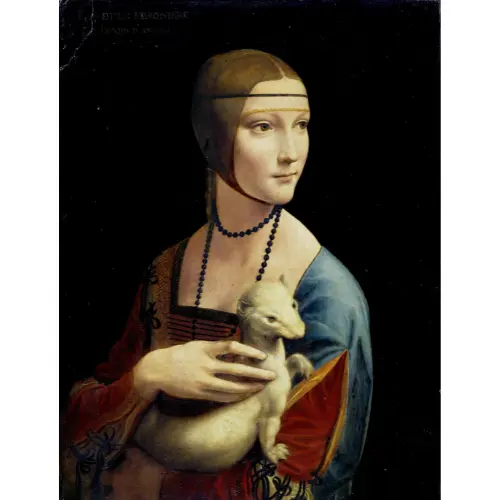
Exploring the realm of Renaissance jewelry through the perspective of Leonardo da Vinci's iconic paintings, "The Lady with an Ermine" unveils the story of Cecilia Gallerani, the mistress of Ludovico Sforza, Duke of Milan. Beyond the symbolic ermine, often associated with purity and status, the discreet inclusion of jewelry in the painting provides insight into Renaissance aesthetics.
Cecilia's necklace, though modest, enhances her appearance with a simple yet refined elegance, embodying the Renaissance concept of beauty found in simplicity. Despite not being extravagant, this piece signifies a subtle sophistication, aligning harmoniously with the societal norms and personal identities prevalent during that era.
Legacy and Influence
The legacy of Renaissance jewelry continues to inspire contemporary designers and artisans today. The emphasis on craftsmanship, symbolism, and artistic expression seen in Renaissance jewelry can be found in modern interpretations that pay homage to this rich artistic tradition. Museums around the world house collections of Renaissance jewelry that serve as a testament to the enduring beauty and significance of these pieces.
In conclusion, Renaissance jewelry represents a pinnacle of artistry and craftsmanship that continues to captivate audiences centuries later. From intricate goldwork to vibrant gemstones and symbolic motifs, Renaissance jewelry embodies the spirit of creativity and innovation that defined this remarkable period in history.







